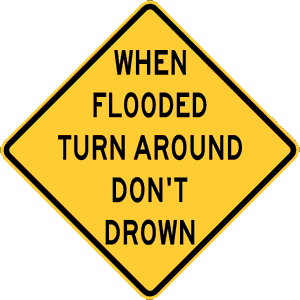
Certainly the dangers of lightning are most prevalent outdoors and being indoors is the safest place to be when thunder is heard. Even inside your home or business lightning can be damaging and cause significant injury.
From the National Weather Service:
PUBLIC INFORMATION STATEMENT
NATIONAL WEATHER SERVICE GOODLAND KS
600 AM MDT THU JUN 24 2021
Statistics tell us that we are much less likely to become a lightning strike victim if we are inside a substantial structure such as a home or office building. In 2016, thirty eight people in the United States were killed by lightning, and all of these fatalities occurred outdoors. While nearly all people who are injured or killed by lightning were outdoors, a small percentage of people are injured by lightning while indoors. Therefore, it is important to discuss lightning safety while indoors.
The dangerous electrical current associated with a lightning strike typically enters a structure through wires, cables or pipes that connect to the building from the outside. Lightning can also directly enter into a structure through an open window, door or garage door. Once in a structure, the dangerous current can travel through the electrical, phone, cable and plumbing systems and through metal wires or bars in concrete walls or flooring.
Corded electronic devices are the leading cause of indoor lightning injuries in the United States. These include personal computer keyboards, game consoles, and corded phones. Other injuries have occurred when people were close by to televisions which connect to an outside cable or satellite system. Open windows, doors and garage doors allow for a direct strike to enter a home, so make sure all windows and doors are closed when lightning is occurring. Never watch a lightning storm from a porch or open garage door. There are several You-Tube videos that show people being injured by lightning while they were recording lightning from their porch or open garage door.
It is very important to stay away from any plumbing when lightning is occurring outside. This includes sinks, bathtubs and showers. When lightning is occurring, do not hand wash dishes, do not give kids a bath, and do not take a shower. It is best to wait to do laundry until after the storm goes by as washers and dryers are connected to both the electrical and plumbing systems.
People have also been injured while leaning and standing near concrete in their homes and offices. This is due to metal rebar which is in the concrete, and this metal acts as a conductor when lightning hits the building.
A house or other substantial building offers the best protection from lightning. In contrast, many small shelters such as bullpens, picnic shelters, sheds or tents (no matter what the size) offer no protection from lightning, and should be avoided at all cost.
Here is a summary of lightning safety tips for inside the home:
1. Avoid corded electronics and electrical equipment.
2. Avoid contact with plumbing, such as taking a shower, bathing, hand washing dishes or doing laundry.
3. Stay away from windows, doors, garages and porches.
4. Do not lie on concrete floors or lean against concrete walls.
5. If a substantial building is not nearby, an enclosed car or truck offers excellent protection from lightning.
Below are a couple of web sites that contain additional lightning information:
NOAA’s lightning website which contains abundant information on lightning safety can be found at: www.lightningsafety.noaa.gov
Lightning information specific for the State of Colorado can be found at: www.weather.gov/pub/lightning
The lightning topic for tomorrow will be lightning medical issues for survivors.
Lightning Safety and Wildfire Awareness Series:
- Lightning Safety and Wildfire Awareness Week Introduction
- Lightning and wildfire safety overview
- The science of thunderstorms and lightning
- Outdoor lightning safety – When thunder roars, go indoors
- Indoor lightning safety – Staying safe in your home or office
- When lightning strikes – Rendering aid and the lasting effects of a strike
- Lightning and wildfires – Hand in hand hazards






 Floods and wildfires are arguably the two most common disasters Coloradans face with numerous such events occurring each year. To better prepare residents for the danger of these disasters, this week is Colorado Flood Safety and Wildfire Preparedness Week.
Floods and wildfires are arguably the two most common disasters Coloradans face with numerous such events occurring each year. To better prepare residents for the danger of these disasters, this week is Colorado Flood Safety and Wildfire Preparedness Week. Floods and wildfires are arguably the two most common disasters Coloradans face with numerous such events occurring each year. To better prepare residents for the danger of these disasters, this week is Colorado Flood Safety and Wildfire Preparedness Week.
Floods and wildfires are arguably the two most common disasters Coloradans face with numerous such events occurring each year. To better prepare residents for the danger of these disasters, this week is Colorado Flood Safety and Wildfire Preparedness Week.